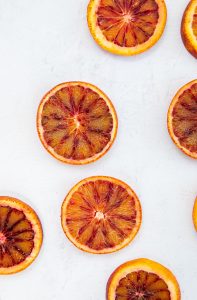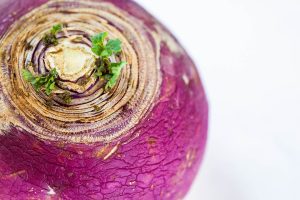with beautiful and vibrant blood oranges hues. In season now, it’s time to seek out your blood oranges, they are only around for a short time. Grown in the Mediterranean, being slightly tarter than regular oranges, they have amazing ruby red pigment inside and a wonderful blush skin on the outside. It is this pigment … Continue reading Blow away those January blues
with beautiful and vibrant blood oranges hues.
 In season now, it’s time to seek out your blood oranges, they are only around for a short time. Grown in the Mediterranean, being slightly tarter than regular oranges, they have amazing ruby red pigment inside and a wonderful blush skin on the outside.
In season now, it’s time to seek out your blood oranges, they are only around for a short time. Grown in the Mediterranean, being slightly tarter than regular oranges, they have amazing ruby red pigment inside and a wonderful blush skin on the outside.
It is this pigment that makes them so special, nutritionally similar to a regular orange they are much higher in antioxidants, it is the same pigment as found in beetroot and blueberries, among other purple vegetables.
Random fact…….
They are at their sweetest in January and February, due to the drop in temperature during the cold nights that follow warm days, for blood oranges to blush (turn ruby red), they require the night time temperature to drop to -1 or -2°C for at least an hour. This means that over 24 hours there is a swing of nearly 20 degrees between day and night.
I don’t normally start my blog off with a fruit, but with a vegetable, however, I do think that the Blood orange should take pride of place this month.
Our vegetable of t he month is the swede
he month is the swede
Its origins are unclear, but it may have been developed in Bohemia in the 17th century, as the result of a cross between a turnip and wild cabbage. Today the swede is one of the hardiest root crops.
Swede has many national and regional names. Whilst it is generally know as ‘swede’ it is known as rutabaga in North America. I have also heard it being called Swedish turnip or yellow turnip’.
The swede is thought to have been introduced into Britain around 1800. It is said that King Gustav of Sweden sent the first swede seeds as a gift to Patrick Miller (1731 – 1815) of Dumfries and Galloway, and that this act resulted in the vegetable being called ‘swede’.
They were first used as a winter fodder crop for cattle and only began being consumed by man during times of hunger. As a result they gained a reputation in the 18th century of being a ‘peasant food’.
The Scots serve them with potatoes, where they are known as ‘tatties and neeps’, the traditional accompaniment to haggis at Burns Night suppers. When mashed with potatoes, the dish, which originated in the Orkney Islands, is called clapshot. Further north, in Finland swede is casseroled with cream and spices.
Swede is also a component of the popular condiment Branston Pickle and is one of the four traditional ingredients of the Cornish pasty.
Swedes may have a sweet, rich flavour, but they are low in calories and reasonably high in vitamin C.
Random fact……
Swede was used as a substitute for orange juice in World War II – It must have taken some imagination though!!
Did you know that you can also eat the leaves, they’re used much like other leafy vegetables, such as spinach or chard, well worth giving them a try.
We’ve had great fun creating this Swede & Blood Orange Steamed Sponge Pudding recipe for you, and we think you will like it, a really good winter warmer.
